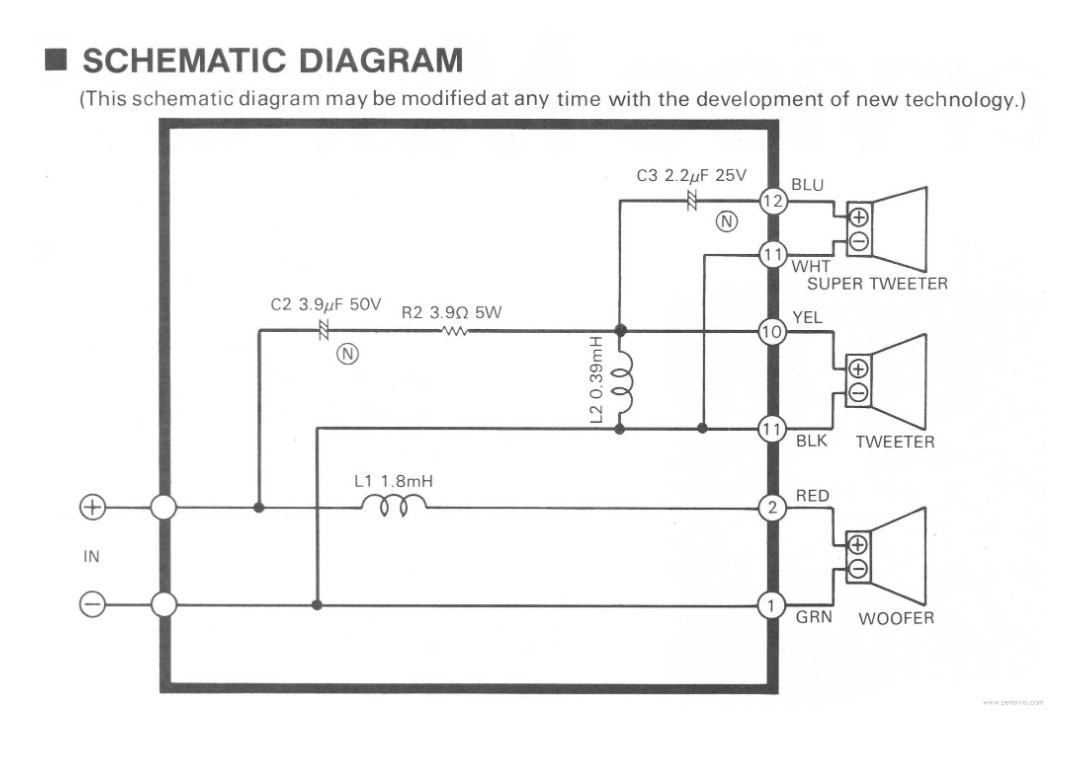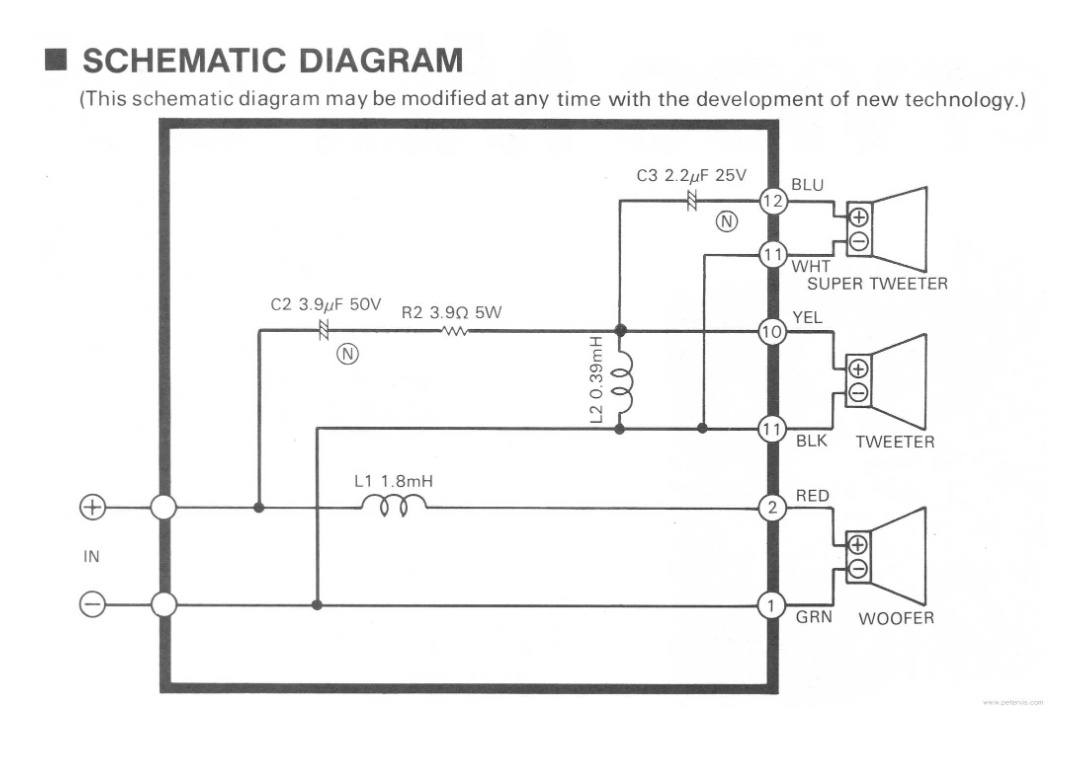thanks, I'll try that. so far I only used the Part Design and Sketecher workbenches, I'll try the Draft.
1ko
3D printing, I plan on placing the left angled side (of the top left sketch) on the printing bed, this way I should avoid supports.
I will try a AC filter if I can find one at a decent price.
at the price of losing my warranty unfortunately.
After further reading about filters I ended as the same conclusion as you. I first thought the L2 was removing high frequencies, but it is in fact an LC filter to remove bass more efficiently.
Thanks, I will do that.
Will I get the high frequencies back if I remove L2?
Thanks. I haven't told the whole story. In fact one of the tweeter is also dead. As I don't plan to invest for such an old piece of hardware (I'm not even sure they are particularly good to begin with), I had the idea to replace both tweeters with a pair of Visaton FR8JS who are cheap, have convincing specs and will fit perfectly in the hole of the previous tweeters. I did not find a match for super tweeters ( and I don't want to modify the cabinet). The crossover circuit is easily accessible (solderer on the other side of the connectors plate) so il would try to bypass the crossover.
That's my question, how do I get rid of the crossover. In my limited understanding of electronics, the c3 capacitor will do nothing if terminals 11 and 12 are open. I'm not sure though.





Thanks, I verified the sketches twice, there's no open wire. Fun fact, if I delete all the other objects, Freecad can happily make the loft...